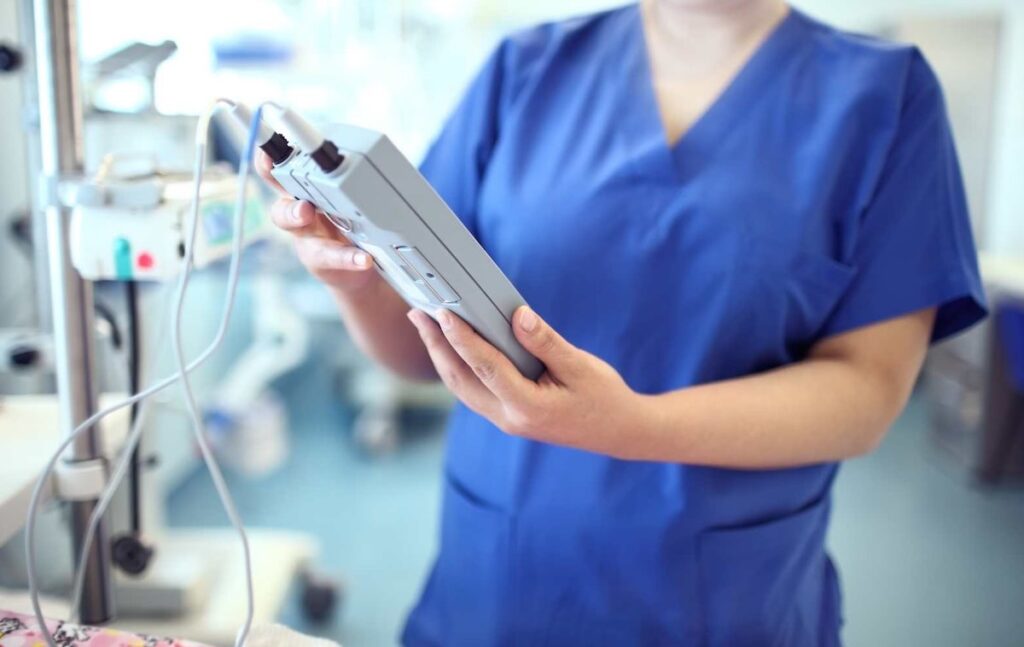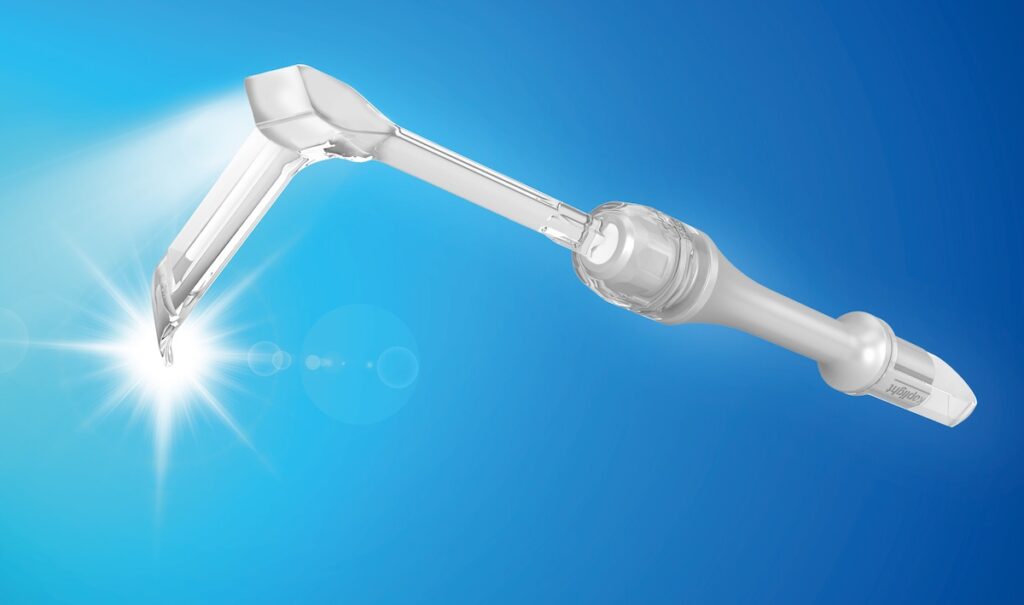The greatest medical devices aren’t just the result of good design. Every medical device used in a hospital or clinic depends on clear, consistent protocols to be used effectively and sustainably.
Without proper protocols, even the best devices can become safety risks, lead to poor outcomes, or disrupt surgical workflows.
Medical professionals and distributors alike need to understand how these protocols lead to safe use, maintenance, and integration of devices across clinical settings.
This article explores why protocols matter, how they’re built, and where they affect everything from safety checks to staff training. This will help you make smarter decisions that improve results for patients and care teams, whether you’re a clinician or a distributor.
Contents
The role of protocols in medical device safety
Standardized protocols ensure safe, correct, and consistent use of medical devices. Without enforced protocols, devices fail to fulfill their purpose and become potential health hazards. In a clinical environment such as the operating room, an inconsistent or incorrect device application can cause injuries to the medical staff and disrupt workflow, thus putting patient safety at risk.
Medical device patient labeling is a measure that aims to educate healthcare professionals and patients about the safe and effective use of medical devices. Device labeling includes written information such as instructions, precautions, contraindications, and maintenance guides.
Guides such as the US Food and Drug Administration (FDA) Guidance on Medical Device Patient Labeling precisely regulate the labeling process. By following the guidance, medical device patient labeling protocols:
- Improve communication between manufacturers, clinicians, and patients
- Support correct device handling, cleaning, and maintenance
- Align with current regulatory standards
FDA’s guidance provides an example of a unified reference for safe device use to users, regardless of clinical setting.
Regulatory frameworks guiding protocol development
Medical device protocols follow regulatory standards developed by national and international bodies. Standards are detailed, technical guidelines developed by experts, often international groups like the International Organization for Standardization (ISO).
A widely known example of a regulatory framework published by ISO is ISO 14971:2019 – Application of Risk Management to Medical Devices. This framework outlines a systematic approach to risk management regarding medical device use. It helps organizations identify hazards, evaluate risks, and establish control measures when creating protocols that regulate medical device use.
Regulatory agencies like the FDA and the EMA (European Medicines Agency) are official organizations that protect public health. They set rules based on regulatory frameworks that medical devices must follow before reaching a market or hospital. Protocols, on the other hand, are the step-by-step instructions used in real-world settings. Hospitals, clinics, and manufacturers develop them to ensure that devices are used correctly. Protocols must follow standards and comply with guides from regulatory bodies, such as the FDA or EMA. Protocols are in place to support compliance, quality assurance, and patient safety.
Institutional policies and their impact on device usage
Hospitals and healthcare institutions translate international standards and regulatory rules into practical policies or protocols. These local policies cover various aspects of medical device usage, including selection, setup, use, cleaning, storage, and disposal.
Institutional policies also dictate who can handle or service certain devices. They’re tailored to fit the requirements of specific clinical environments. For example, a surgical department can implement protocols that determine responsibility for maintaining tools or verifying sterilization after use. The purpose of such a protocol would be to ensure accountability and continuity of care.
The policy on medical devices and equipment (Policy no CS017) created by Nottinghamshire Hospice – a UK charity providing palliative care – is a good example of how a policy can instruct medical staff on the use and handling of medical devices within an institution. The policy aims to ensure the application only of safe, suitable, and functioning devices in line with European and national directives. In addition, it assigns clear responsibilities to nurses and technical staff and outlines procedures for reporting errors, storing equipment, and verifying that single-use items don’t undergo reprocessing.
Maintenance and equipment management protocols
Maintenance protocols are critical aspects of keeping medical devices safe and operational. They determine the procedures and periods of regular maintenance checks (daily, monthly, yearly).
Maintenance checks include scheduled inspections, part replacements, cleaning, and calibration. Healthcare staff and administrators must follow national guidelines that lay out expectations for device inspection and documentation. An example of such a guideline is the Centers for Medicare & Medicaid Services (CMS) Memo S&C: 12-07.

According to the CMS guideline, US hospitals must keep an up-to-date equipment inventory and perform regular maintenance checks. The guideline allows some flexibility for maintaining non-critical equipment, such as blood pressure cuffs; however, checks of devices that are essential to patient safety, like defibrillators or radiologic imaging equipment, must strictly follow the manufacturer’s instructions for use (IFUs). Institutions should present documentation and evidence from technical experts for any potential changes to maintenance schedules.
Ignoring routine checks can cause sudden device failures or compromise performance during surgeries and daily patient care.
Reprocessing single-use devices: Protocols and considerations
Healthcare facilities are continuously striving to minimize the costs and environmental impacts of medical device use while simultaneously keeping patients safe. In these respects, the application and reprocessing of reusable devices have drawn attention as viable solutions.
The reprocessing of single-use devices (SUDs) isn’t a new concept; it has existed for over 50 years. This practice requires rigorous protocols that precisely:
- Determine cleaning, disinfection, or sterilization procedures
- Test adequate device functionality
- Specify the performance standards that devices must meet
Skipping or overlooking reprocessing protocols can pose serious risks of contamination and mechanical failure. Institutions that reprocess SUDs typically follow guidance from regulatory bodies to ensure that re-use does not compromise safety.
The FDA has permitted single-use device reprocessing under strict supervision. According to FDA recommendations, healthcare facilities must ensure and document that devices are clean, sterilized, labeled, and tested to perform like new. To protect patient safety, reprocessing institutions must meet the same standards as original manufacturers.
Clinical trial protocols for medical devices
Before new medical devices can reach healthcare institutions, they must undergo comprehensive testing via clinical trials. Clinical trials, however, must follow trial protocols for medical devices.
Trial protocols help ensure patient safety and the consistency of the data collected. They serve as a roadmap for the researchers conducting the trials. Protocols define clear primary and secondary endpoints, establish inclusion and exclusion criteria for participant selection, and outline procedures for data collection and analysis.
Developing a clinical trial protocol for a medical device involves a detailed plan that outlines the study’s objectives, design, methodology, and data analysis strategies. Ethical considerations, such as obtaining informed consent and ensuring participant confidentiality, are also integral parts of protocols.
Regulatory authorities appoint review boards to assess these protocols before a trial begins and monitor compliance with their regulations closely. By adhering to protocols, researchers can generate data that support device approvals for future use in healthcare facilities.
Reporting and managing device-related incidents
Despite the many steps of approvals based on standards, medical devices can fail, and incidents can happen. When incidents occur, healthcare facilities must have protocols in place to report, analyze, and address the situation. These protocols outline who reports the issue, who prepares the documentation, and what actions follow. A proper protocol foresees preventive measures to help prevent device-related incidents from recurring.

In the United States, the FDA-enforced Medical Device Reporting (MDR) regulation requires manufacturers and device user facilities to submit reports of adverse events and product-related problems. Hospitals and clinics develop their own internal protocols to comply with this regulation. For example, the Medical Device Reporting Policy by UI Health Care provides a step-by-step guide for healthcare professionals to document device malfunctions and patient harm.
In the European Union, the Medical Device Regulation (MDR 2017/745) regulates reporting through national authorities. Reporting protocols are regulatory obligations that aim to ensure and improve patient safety and operational flexibility in healthcare environments.
Training and competency protocols for healthcare professionals
Even the most advanced device cannot perform effectively in the hands of an untrained user. Training and competency protocols ensure that healthcare professionals understand how to use, maintain, and troubleshoot medical devices in different clinical scenarios.
These protocols typically define minimum training requirements for each staff role, instruction methods (simulation, e-learning, etc.), assessment methods, and re-certification timelines. Healthcare institutions may also integrate training modules into onboarding processes and continuing education programs.
Training protocols also reduce variation in device use, improving outcomes and minimizing adverse events. According to reports received by the Medicines and Healthcare products Regulatory Agency (MHRA) in 2012, inadequate training was identified as a contributing factor to a quarter of reported medical device-related incidents in UK hospitals.
The Boston University Medical Campus Protocol Template is an example of a training and competency protocol. This protocol instructs users how to assess and verify competency in clinical settings. It also outlines a structure for organizing device-specific training according to institutional needs.
Biomedical engineers, surgical technicians, and even cleaning personnel can also benefit from training on the proper handling and operation of medical devices. Training should also cover new devices introduced into the hospital, updates to existing technologies, and emergency protocols in case of device failure.
Further reading
Quality control protocols/measures for fraudulent medical devices
A modern, potentially indispensable device
Our Yasui koplight™ is honed and refined to improve surgical outcomes while adhering to budgets and protocols. Contact us for more information.


